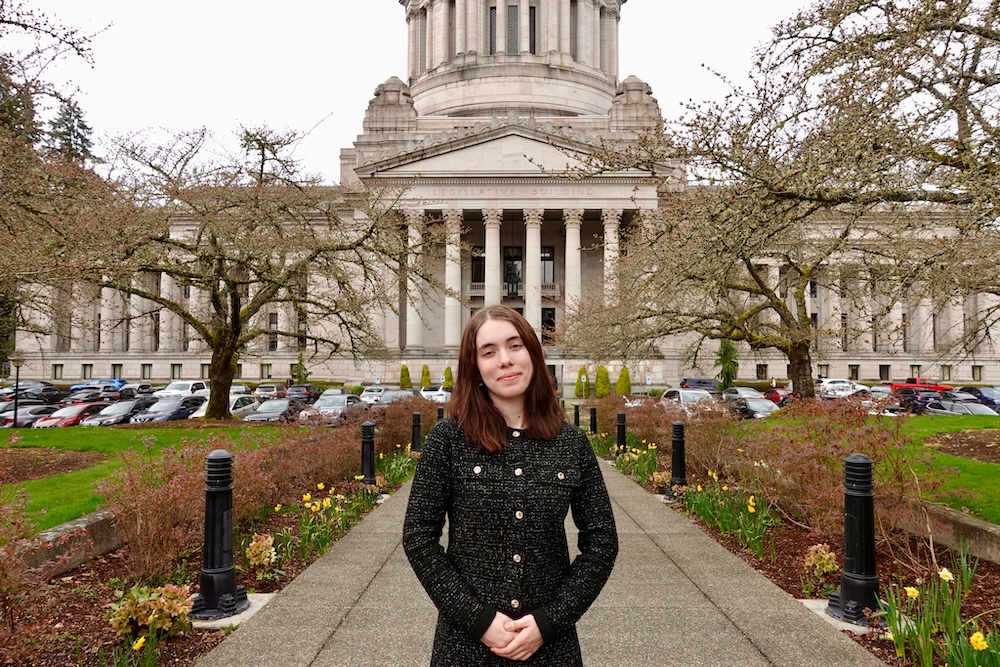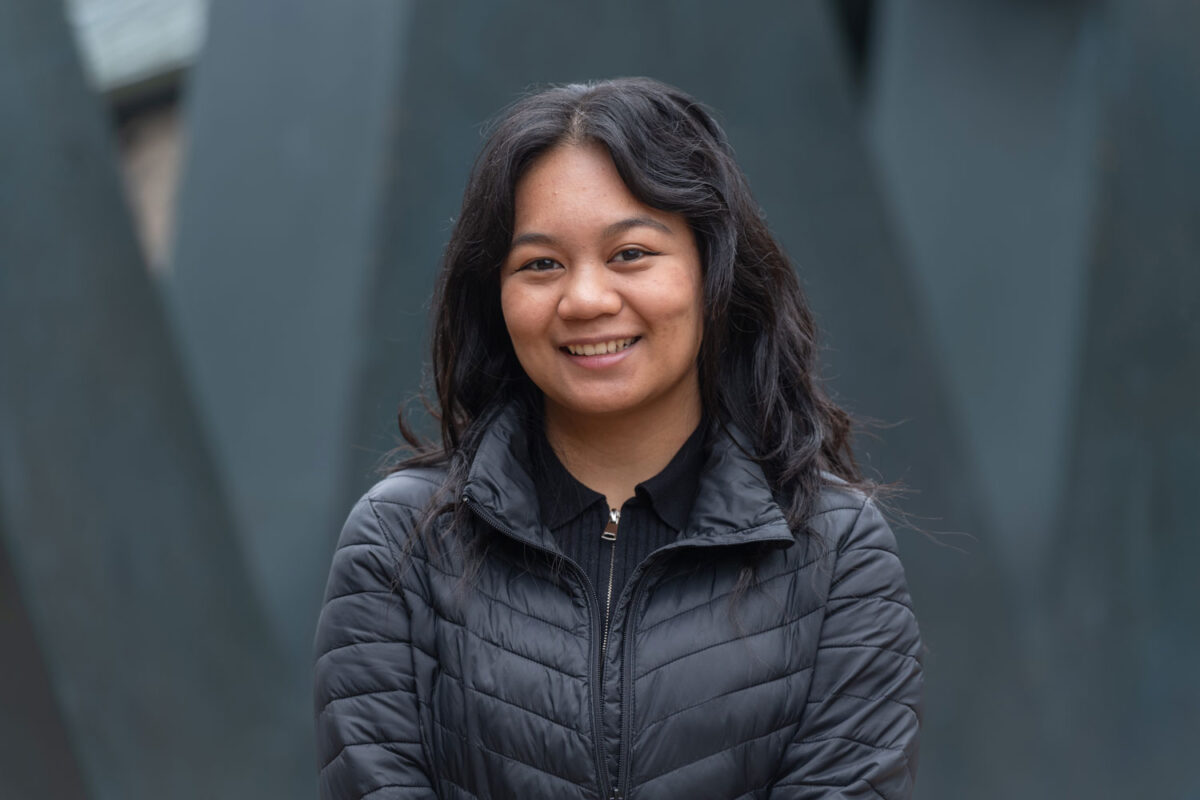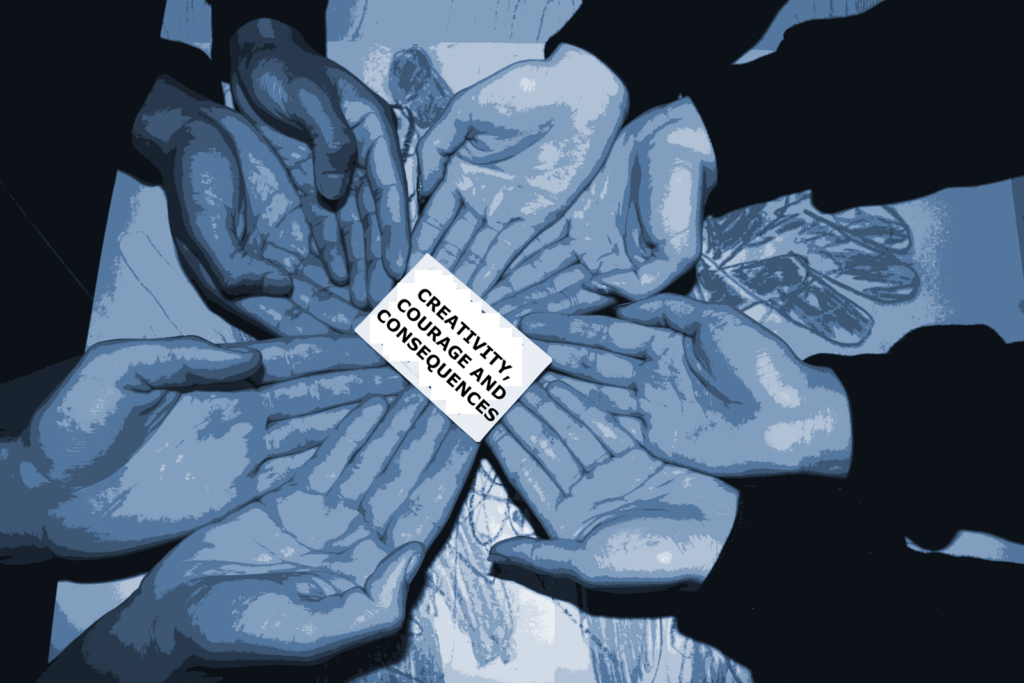
To succeed in their field of study, students often hear they must be smart, studious and disciplined. Rarely are they told they must also be creative. In fact, students are commonly instructed to weed out their imaginative thinking and to instead follow instructions, stick to rubrics and avoid bias.
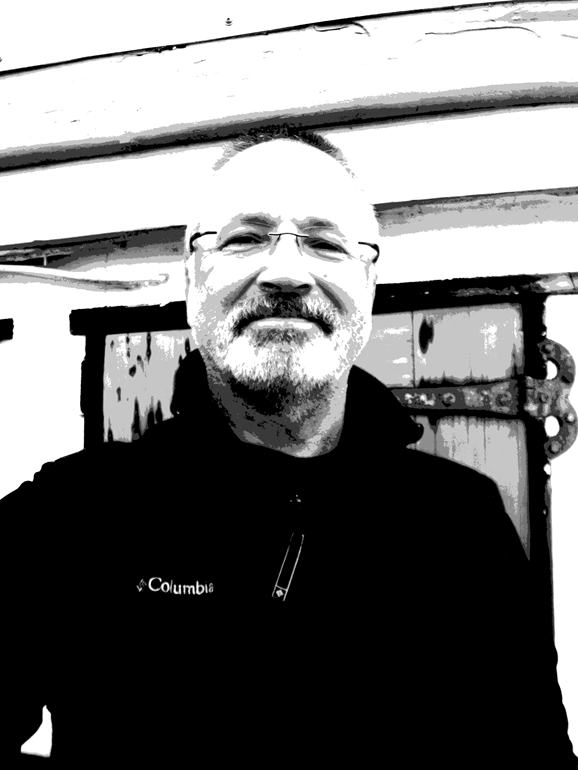
Gary Carpenter, lecturer in the School of Interdisciplinary Arts & Sciences, is on a mission to turn that line of thinking on its head. “We are facing unprecedented global challenges that cannot be addressed through isolated industries or fields of study,” Carpenter said. “There is a pressing need across all industries and disciplines for people who think creatively.”
With that in mind, Carpenter used his imagination to design and produce a Discovery Core Experience class at the University of Washington Bothell called Creativity, Courage & Consequences. Through the course, students examine the growing and urgent need for innovation and ingenuity while developing personal approaches to expand their own creative practices.
Discovery Core classes aim to help first-year students transition to academic life. In this class, they use creativity to explore why they’re in college and what they hope to accomplish — in school and after graduation.
Art across disciplines
While creativity has always been a fascination of Carpenter’s, he said that as a student he was surprisingly STEM oriented. “I loved the steady rules of math and science. I was always trying to apply it to the arts, trying to find the formula for creativity,” he said. “It took me years to finally realize, and accept, that it just doesn’t work that way.”
The time he spent in both disciplines now benefits the undergraduates he teaches.
First-year student Janani Rajagopalan is an aspiring STEM major who plans on pursuing a degree in Computer Science & Software Engineering. She was drawn to Carpenter’s class because of its broad problem-solving approach, which she said is an important skill to have in the sciences.
“We talked a lot about how in society, we often say, ‘Leave the science to the scientists and the art to the artists’ — but it actually seems like we should look at science through an artistic lens and vice versa,” Rajagopalan said. “The class made me realize that art can be, and often is, a tool that can educate, inspire and encourage people to solve issues innovatively. It is much more than just masterpieces hung on gallery walls.”
For Carpenter, that’s the whole point: getting students to think across disciplines. “It has been proven that the arts enhance learning in the field of STEM,” he said. “It broadens how we tackle challenges and vastly improves learning.”
Playfulness in class
Unlike most syllabi that students come across in their academic career, Carpenter’s includes the term “constructive play.” It ties back to the idea that in university, students are expected to study and be adult-like, not do something traditionally thought of as childish, such as play.
Once again, Carpenter is breaking the “rules.”
He believes that “play is highly underrated in creative endeavors because as a society, we feel play is for kids and therefor lacks rigor,” he explained. “While play can be enjoyable and undirected, it can also be constructive and used to gain a specific outcome if properly directed.”
Carpenter said there is a need to be playful with ideas because, if we are too literal and only focus our attention narrowly, we significantly limit our range of ideas. “And, if we do so trying solely to isolate the ‘right’ answer or the best outcome, we limit our willingness to explore many options at all,” he said. “But, when we enter into idea generation with a playful mindset, we begin thinking more broadly and less literally, which simply generates a richer body of ideas.”
All that said, it’s particularly difficult to teach this way, said Carpenter, because the educational system has focused for so long on right answers and the fastest path from point A to point B. “Even on six-week projects, students feel compelled to arrive at ‘the’ answer to the task at hand within five to seven minutes — literally. It takes a very scaffolded approach to instill these practices, but the payout is significant,” he said.
Break-through ideas
Students practice creative play in the classroom in multiple ways, including doing icebreakers that can help break down barriers and help students feel more comfortable simply exchanging ideas. The play often focuses on low-stakes exercises that have no correct answers.
Carpenter scaffolds these throughout the quarter not just to increase students’ collaborative abilities and willingness to invite playfulness in but also to model the behavior for their future creative endeavors, whether it’s writing a paper, creating an experiment or inventing a new toy.
The concept of constructive play was particularly impactful for student Preston Rafael Leon. He says this class has completely transformed his understanding of creativity.
“I now see it as a way of coming up with different ideas to solve an issue. When I think about how I can use what I learned in this class, the possibilities are endless,” Leon said. “With a more open brain, you can consider what before may have seemed irrational. When we constantly censor what we are allowed to think, it can inhibit our creativity and inhibit the solutions that we come up with.”
Can the critic
Unfortunately, what Carpenter refers to as “our inner critic” tends to coincide with creative play. He describes it as “the voice that might suggest our ideas are unreasonable, silly, embarrassing or simply wrong.”
The inner critic initially can prevent a free exchange of ideas simply by being too critical. “Having students understand that we can always invite the critic back — and that they will need to eventually — often frees them up enough to set it aside initially. And, once they experience the benefits of this practice, it becomes a habit relatively quickly,” he said.
Carpenter finds simply engaging students in play to be the best way to illustrate the benefits to them. “They feed off the responses from the most innovative outcomes of their classmates to inspire themselves to push the boundaries even further on the next round,” he said. “The difficulty is in doing these exercises regularly despite the precious class time they require. It always pays off.”
And indeed it does, particularly for student Ayden Lee Sharpe.
“The discussions we had about the inner critic is what stuck with me most,” he said. “They made me realize how much I doubted my own creativity, and now I am taking the steps to be less critical of myself and my work. They helped so much I actually wrote a rough draft of a book that I plan to publish in CLAMOR, the UW Bothell literary and arts journal.
“This class has really improved my self-esteem,” Sharpe said.
Variety of creations
For their final project, the students participated in Community Reads, a program of the UW Bothell and Cascadia Campus Library that uses books to cultivate productive discussions in the campus community around equity, social justice and diversity.
These conversations used to take place in person. In 2020, they were moved online with a series of prompts. Participants respond with a variety of creations — paintings, drawings, collages, digital media, poetry and even music. To bring the lessons of the quarter together through an area of personally engaging research, Carpenter’s students each responded by writing an essay and creating a work of art.
The Community Reads programming in fall 2021 revolved around the book “Undrowned: Black Feminist Lessons from Marine Mammals” by Alexis Pauline Gumbs. Carpenter believed it fit particularly well with the class because “Gumbs, the author, beautifully presents her research through her own lenses rather than a neural, academic approach that attempts to remove the author from her work.”
Like the book, the assignment asked students to incorporate research to ground their projects but also encouraged them to prioritize their own lenses as they did the research with the hope that it would inspire a different way of thinking.
“I believe it’s our differences rather than our similarities that make our exchange of ideas so rich, informative and inspiring,” Carpenter said.
Strange, profound connections
Student Gavin Richard Garrison painted a beluga whale. When he was only a month old, he stopped breathing and for a short period of time, he lingered between life and death. “While this was long ago,” he said, “I am reminded by how important breathing is when I think back to how different that outcome might have been.”
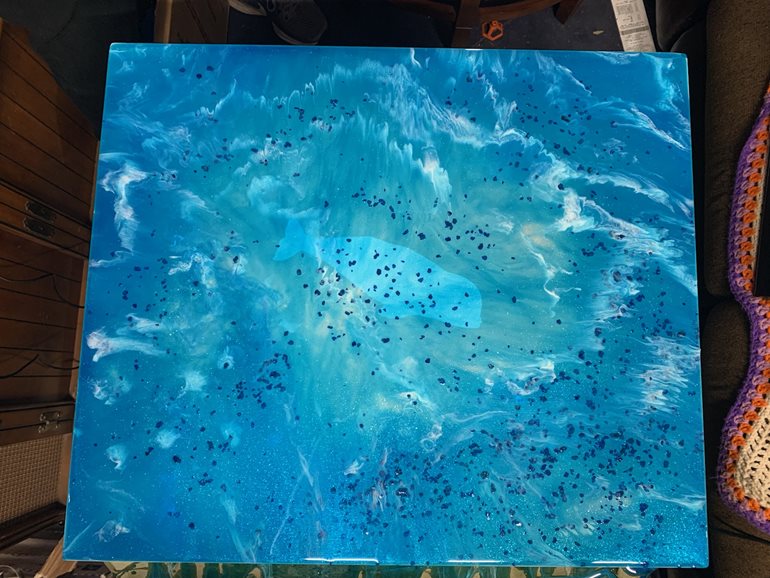
Abstract painting by Gavin Garrison, a beluga whale submerged in a sea of shades of blue
He connected to the beluga whale because of its ability to adapt and survive, just as he had to 18 years ago. “By reading the book, I learned that the beluga whale can hold its breath for twelve and a half minutes, and that its ability to let out a breath helps with the carbon cycle of the planet,” Gavin said. “Just by breathing, it helps other living things survive — and to me, that’s pretty inspiring.”
Carpenter said he is inspired and proud of the work students have done, both for the project and in the class. The students’ work can be viewed on the Community Reads website.
“Seeing their progression has been really rewarding as a professor,” he said. “I hope that students know their experiences and perspectives matter a lot, and those differences are what makes them unique and valuable.
“What the students took away from this class certainly exceeded my expectations for the quarter.”

